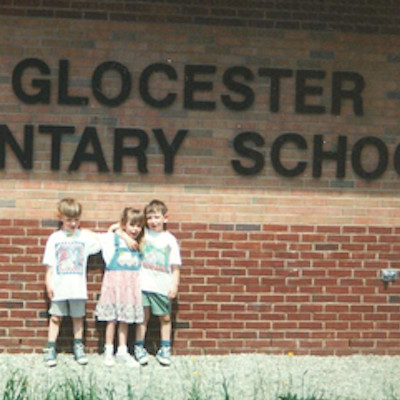Developing and Supporting Rhode Island’s Talent Pipeline
Monday, March 10, 2014
This week, GoLocalProv investigates the fifth and final major theme from Economic Intersections of Rhode Island, a private-sector generated report that outlines collaborative solutions to jumpstart the Rhode Island economy. Written based on the input, recommendations, and work of more than 200 professionals from across all sectors of the Rhode Island economy, this report examines the most creative, bold and, exciting new industries that will help to get the Ocean State back on its feet.
“Supporting the Talent Pipeline”
Although Rhode Island’s seasonally adjusted unemployment rate in December 2013 was at 9.1-percent, higher than any other state, surveys from the Department of Labor and Training say that around 10,000 job openings are unfilled due to a lack of work-ready applicants. “Supporting the Talent Pipeline” highlights ways in which Rhode Island can help train and retain local workers to bolster the economy.
GET THE LATEST BREAKING NEWS HERE -- SIGN UP FOR GOLOCAL FREE DAILY EBLAST“Engage and Inform K-12 Youth and Families”
Exposing K-12 students and their families to more diverse career options and higher education paths is essential to giving the students of Rhode Island more options about future career paths. Many students often lack the proper information or have preconceived notions about certain career fields. Proper education and guidance could help better assist them in their choices. Immigrant and low-income families may have more of a struggle to become properly prepared, due to language barriers or a general lack of exposure to different fields in the job market.
Economic Intersections called for a few actions to take place in order to aid Rhode Island’s youth so that they can be better prepared to enter the job market or higher education upon graduation. Expanding in-school career counseling so that school counselors can be more informed about career opportunities, an increased exposure to high-opportunity industries by hosting industry representatives in school, and building engaging maker and innovation activities, such as the Newport Tech Expo and the MET Center for Innovation, into high school curricula are all ways to better prepare students.
The report acknowledges that the University of Rhode Island, Tech Collective, and the Governor’s Workforce Board Industry Partnerships are already working to address these recommendations. In addition to the above organizations, the report says that the Rhode Island Department of Education and the Department of Labor and Training would be “key public partners”.
“Assist Employers in Attracting and Retaining Qualified Workers”
Representatives throughout many of the industry sectors - manufacturing in particular - have displayed a willingness to train workers on the job, provided they could find employees who were interested in the field. Even with this willingness to train, many of the industry sectors are citing difficulties in finding qualified employees, especially at the mid-level.
Economic Intersections highlighted a few key areas in which employers could not only find, but retain their workforce. These options include effective labor training and internship programs that are presented in an accurate and timely manner, expanding “IT on Demand” type programs into other industries, increasing partnerships between higher education and the industry, and supporting and participating in work experience programs such as bRIdge.jobs.
The report also states that for options like these to work, cooperation between the Department of Labor and Training, the Rhode Island Department of Education, the Governor’s Workforce Board, and institutions of higher education is needed.
“Develop the Information Technology Talent Pipeline”
An IT skills gap analysis published by Tech Collective in 2013 shows that an all-time high of 13,500 people in Rhode Island are working as IT professionals. Even at these numbers, employers who participated in the Economic Intersections discussions highlighted that finding the right employee, a mix of IT-specific skills, soft skills, and general professional skills, is a challenge.
Creating more interest and development of talent among K-12 students in the Science, Technology, Engineering, Arts, and Mathematics fields is one way to help Rhode Island’s regional and national competitiveness among many industry sectors, including Information Technology.
There were several other options presented in the final theme of Economic Intersections of Rhode Island. Examples include convening a summit between RIDE and the department chairs from university computer science programs to address issues of the K-12 curriculum, scholarships, and family education on computer science opportunities, training for high school teachers so that they can better use free online computer science tools, developing a model to increase computer science graduates in Rhode Island by offering classes and programs for students, and adapting an already existing Rhode Island-based gap year program similar to Venture for America, to encourage high school graduates to enter the computer science field.
To better develop the Information Technology talent pipeline in Rhode Island, public stakeholders such as RIDE and the Governor’s Workforce Board, as well as private sector businesses and associations, and institutions of higher education will all have a vital role to play.
“Develop the Manufacturing Talent Pipeline”
Of all of the industry sectors in Rhode Island, manufacturing is one of the areas of most concern. According to the Department of Labor and Training, more than 60-percent of manufacturing employees in Rhode Island were aged 45 or older in 2012. Because of this age gap, employers are trying to hire a younger workforce, something that is crucial to the continued development of manufacturing in Rhode Island.
The development of the manufacturing talent pipeline could be aided by a few propositions highlighted by Economic Intersections. An awareness campaign about manufacturing jobs that specifically targets the unemployed, underemployed workers, and students, looking into the possibility of creating a manufacturing-focused technical high school, creating and regulating after-school and internship programs to allow for manufacturing job experience, and modernizing the Community College of Rhode Island’s manufacturing program facilities to allow for a better transition from schooling to the work force, are all steps that the report says should be taken.
"Any rebound in Rhode Island's manufacturing sector would be key to turnaround the state's economy, as manufacturing jobs generally provide higher wages with economic velocity," stated BankRI's Director of Commercial Banking, Will Tsonos. "Historically, the manufacturing sector created a significant number of jobs and wealth. A 'Talent Pipeline' would help breathe vitality to this sector."
These steps would require the partnership of a variety of organizations, including the Department of Labor and Training, the Office of Regulatory Reform, CCRI, RIDE, the Governor’s Workforce Board, industry representatives and associations, and institutions of higher education.
This column is part of an ongoing sponsored content series with BankRI.
Related Slideshow: Rhode Island’s Most Unemployed Cities and Towns
Below are the unemployment rates for Rhode Island's 39 cities and towns from August 2013.
The statewide average for the month was 9.1% -- the third highest rate in the country.
Related Articles
- Alex and Ani Fuels Economy - Creates Thousands of Jobs in RI
- NEW: RI Unemployment Numbers Dropped to 8.8 Percent in April
- NEW: Rhode Island Unemployment Remained at 8.9 Percent for June
- RI Unemployment Higher than Originally Reported: Up to 9.3 Percent
- Julia Steiny: Economy To Youth: Make Your Own Jobs
- Russell Moore: Election 2014: It’s the Economy, Stupid
- Blais: RI’s Leaders Need an “Ah-Ha” Moment Soon for the Economy
- NEW: RI Unemployment Rate Down Slightly in November
- NEW: Rhode Island’s Unemployment Rate Drops to 46-Month Low
- Rhode Island’s Most Unemployed Cities and Towns
- LISTEN: RI Economy on the Rebound?
- State Seeking Strategic Plans to Address Economy
- Block/RI Taxpayers Organization Challenge General Assembly on Economy
- NEW: RI Unemployment Rate Drops To 9.4%
- NEW: Rhode Island’s Unemployment Rate Now Worst in Nation
- State Report: Chafee’s Budget, Unemployment Rate & Gay Marriage Vote
- Lardaro Report: RI Economy Stalls
- Study Finds Racial Gaps Putting RI’s Economy, Future at Risk
- CCI Report Shows RI Economy ‘Shifting Into High Gear’
- NEW: RI Unemployment Rate Drops to 9.2 percent in January
- NEW: Rhode Island’s Unemployment Rate Drops Again
- Unemployment Above 25% for Rhode Island Youth
- NEW: Providence Voters Pessimistic on Economy
- Study Highlights Value of Competitive Advantage to RI’s Economy
- DLT Director: RI’s Unemployment Rate Won’t “Turn Around Overnight”
- NEW: RI Unemployment Rate Increased in December
- NEW: Unemployment rate falls to 10.2 percent
- Curtis Parvin: Impersonal Consumerism in a Failing Economy
- NEW: RI Economy Continues to Grow, Report Says
- Travis Rowley: This Economy Is Gay
- Horowitz: Restore Unemployment Benefits to Long-Term Unemployed
- NEW: Rhode Island Unemployment Climbed to 9.1 Percent for August
- PODCAST: Rhode Island’s Most Unemployed Cities and Towns
- Executive Office Of Commerce Won’t Help RI Economy—Critics
- NEW: Report Says RI Economy Picking Up Steam
- URI Expert: RI Economy Following ‘Stop and Go’ Pattern
- NEW: RI DLT Reports Lowest Unemployment Rate Since 2008
- NEW: Rhode Island Unemployment Rate Increases
- RI State Report: EDC Nominees, Unemployment & An E-Cigarette Ban
- Exposing the Big Lie of the US Economy
- New RI Web Site Ties Legislatures Failure to Economy - www.OSTPA1.com
- URI Expert: RI Economy Gaining Momentum
- NEW: RI Qualifies For Increased Federal Unemployment Funding
- NEW: Rhode Island Unemployment Rate Up For May 2013
- RI State Report: Unemployment, Gay Marriage & Fox’s Economic Plan
- Is RI’s Economy on the Rebound?
- Rhode Island’s Struggling Economy: Top Stories in RI in 2012
- What Rhode Island Can Do to Move the Economy Forward







